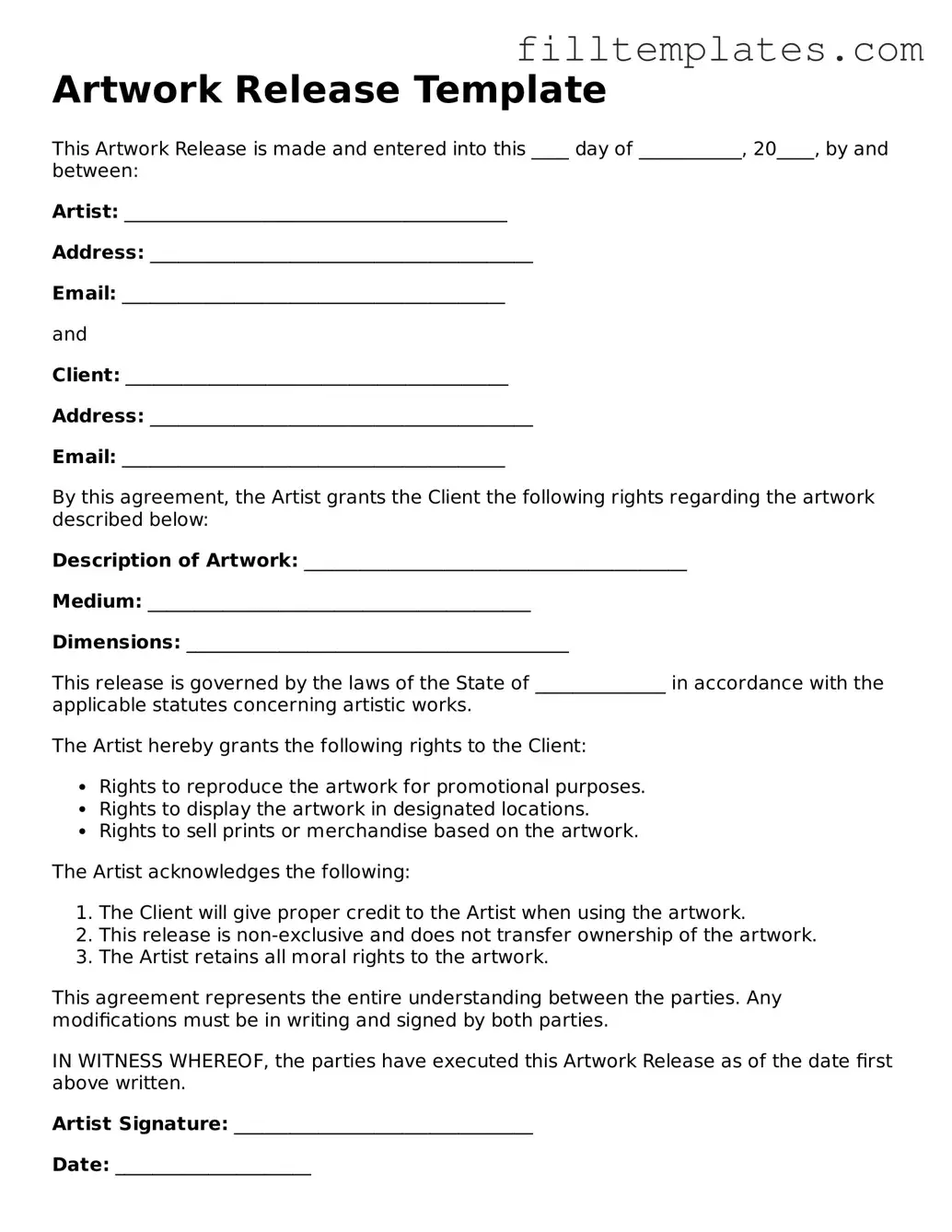Artwork Release Template
This Artwork Release is made and entered into this ____ day of ___________, 20____, by and between:
Artist: _________________________________________
Address: _________________________________________
Email: _________________________________________
and
Client: _________________________________________
Address: _________________________________________
Email: _________________________________________
By this agreement, the Artist grants the Client the following rights regarding the artwork described below:
Description of Artwork: _________________________________________
Medium: _________________________________________
Dimensions: _________________________________________
This release is governed by the laws of the State of ______________ in accordance with the applicable statutes concerning artistic works.
The Artist hereby grants the following rights to the Client:
- Rights to reproduce the artwork for promotional purposes.
- Rights to display the artwork in designated locations.
- Rights to sell prints or merchandise based on the artwork.
The Artist acknowledges the following:
- The Client will give proper credit to the Artist when using the artwork.
- This release is non-exclusive and does not transfer ownership of the artwork.
- The Artist retains all moral rights to the artwork.
This agreement represents the entire understanding between the parties. Any modifications must be in writing and signed by both parties.
IN WITNESS WHEREOF, the parties have executed this Artwork Release as of the date first above written.
Artist Signature: ________________________________
Date: _____________________
Client Signature: ________________________________
Date: _____________________
